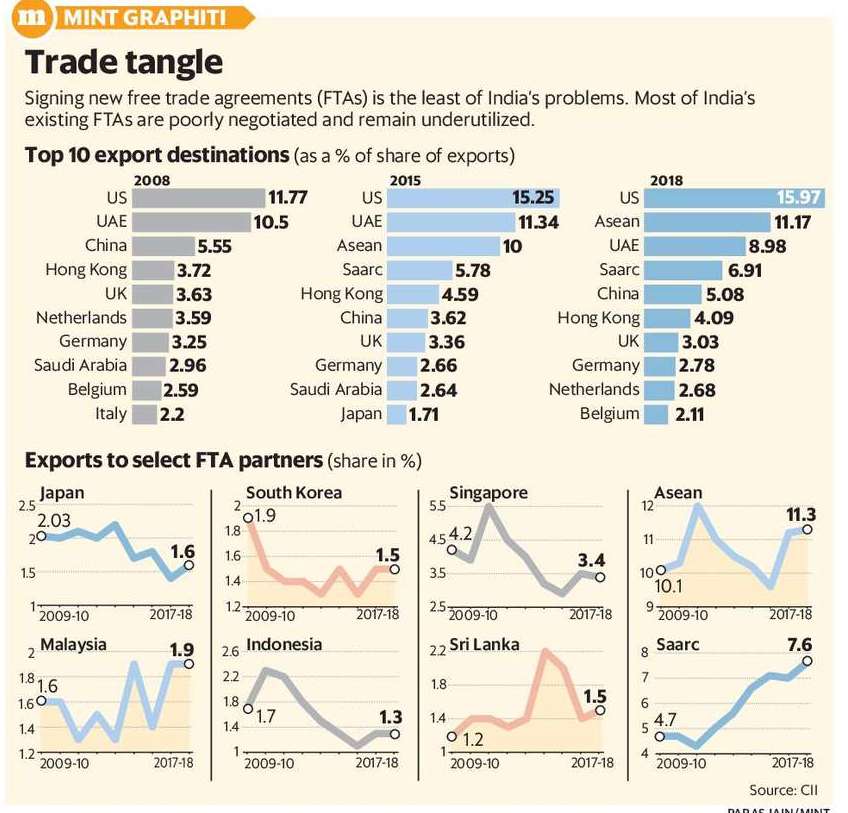Why in news?
India’s shift in trade strategy is evident from its decision to opt out of RCEP and the increasing engagement with the US and EU.
Details
- India announced its exit from the China-led Regional Comprehensive Economic Partnership (RCEP) deal at the Bangkok summit on 4 November.
- While countries like Japan are still trying to woo India back to the RCEP fold, India has now signaled a shift in strategy when it comes to signing free trade agreements.
- It is now showing readiness to renew negotiations on the long-pending free trade agreement (FTA) with the European Union as well as with Britain after the impending Brexit deal is signed.
- India is currently negotiating a limited trade package with the US after which both sides may sit down for a comprehensive FTA negotiation.
India’s FTAs
- Negotiations for the proposed India-EU FTA started in 2007 but talks were suspended in 2013 due to differences.
- FTAs with EU and the US have their inherent advantages for Indian exporters.
- India has lost preferential market access to both economic regions, which has adversely impacted India’s labour-intensive textile exports.
- In June, 2019, the US also withdrew duty-free benefits to India’s exports, further denting India’s competitiveness in certain product lines.

- Most of India’s existing FTAs are poorly negotiated and remain under-utilized.
- For example, in Indonesia, the average tariff for India in non-agricultural goods was 5.5% in 2012, while that for China, it was 2.1%, as a result of the China-Asean FTA.
- This could be because India has been a reluctant globalizer and prefers to sign defensive trade deals that do not hurt domestic industry much, even though it means little additional market access in the partner country.
Way forward
- A nation-wide, cross-sectoral campaign to increase awareness about existing FTAs and the ways in which specific provisions of FTAs can be leveraged by MSMEs would be critical.
- Greater information dissemination about compliance issues are all important for companies to truly be able to take advantage of FTAs



